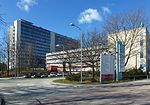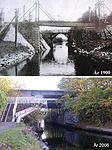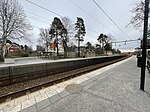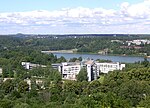Bergshamra, Solna
Metropolitan StockholmSolna MunicipalityStockholm County geography stubsStockholm urban areaSuburbs in Europe
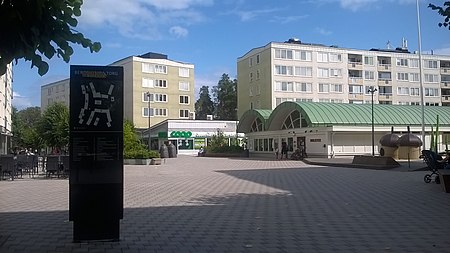
Bergshamra is a suburb within the Stockholm urban area in Sweden. Administratively it is in Solna Municipality of Stockholm County. The suburb is surrounded on three sides by water, with the Stocksundet sea strait to the north-east, the Ålkistan channel to the south-east, and the Brunnsviken to the south-west. Bergshamra station is one of the 100 stations of the Stockholm metro system.
Excerpt from the Wikipedia article Bergshamra, Solna (License: CC BY-SA 3.0, Authors, Images).Bergshamra, Solna
Solna kommun
Geographical coordinates (GPS) Address Nearby Places Show on map
Geographical coordinates (GPS)
| Latitude | Longitude |
|---|---|
| N 59.381388888889 ° | E 18.036388888889 ° |
Address
Solna kommun
Sweden
Open on Google Maps




